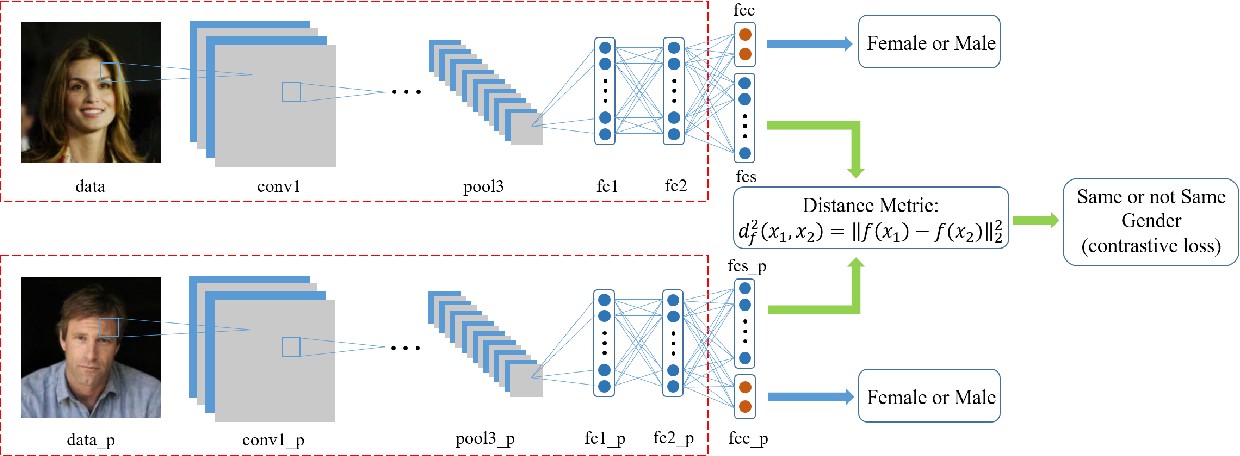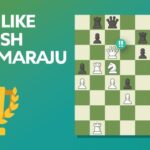One-shot learning represents a fascinating paradigm in machine learning, particularly within computer vision, offering solutions where limited data is available, and LEARNS.EDU.VN is dedicated to making this complex topic accessible. This approach emphasizes learning from a single instance, enabling algorithms to generalize from minimal examples, crucial for tasks like facial recognition with scarce data, enhanced pattern recognition, and efficient image comparison. Explore this innovative technique, its variations, and practical applications to unlock the potential of machine learning with LEARNS.EDU.VN, and discover how few-shot learning and zero-shot learning methodologies complement this approach.
1. Understanding One-Shot Learning in AI
One-shot learning is a machine learning technique that empowers algorithms to classify new objects or categories after being exposed to only one example. This contrasts with traditional machine learning methods that require hundreds or thousands of examples to train a model effectively. The core idea behind one-shot learning is to learn a similarity function that can compare two inputs and determine how similar they are. It offers a pathway to overcoming data scarcity challenges, mimicking human-like learning capabilities, and enabling machines to quickly adapt to new situations with minimal data.
2. The Context of One-Shot Learning: N-Shot Learning
N-shot learning represents a broader category of machine learning where models are trained on a limited number of examples. This encompasses various approaches, including zero-shot, one-shot, and few-shot learning, each distinguished by the number of labeled examples used for training. N-shot learning is particularly relevant when dealing with rare events, emerging trends, or situations where acquiring large datasets is impractical.
2.1. Differentiating One-Shot from Few-Shot Learning
The primary distinction between one-shot and few-shot learning lies in the quantity of training examples provided to the model. One-shot learning leverages a single example per class, while few-shot learning uses a handful (typically less than five) of examples per class. This difference impacts the complexity of the model and the strategies employed for learning. Few-shot learning is beneficial in scenarios where collecting more than one example is feasible but still limited.
2.2. Comparing One-Shot with Zero-Shot Learning
Zero-shot learning takes the concept of limited data to the extreme, where the model must recognize and classify objects or categories it has never seen before. This is achieved by leveraging auxiliary information, such as attributes, descriptions, or semantic relationships, to transfer knowledge from known classes to unseen classes. One-shot learning, while requiring a single example, still benefits from direct observation of the target class.
2.3. Exploring Less Than One-Shot Learning
Less than one-shot learning pushes the boundaries even further, aiming to learn new classes from incomplete or noisy examples. This approach often involves using soft labels or probabilistic representations to handle the uncertainty associated with limited data. It is particularly useful in situations where obtaining clean, labeled data is challenging or expensive.
3. Diving Deep: How One-Shot Learning Functions
One-shot learning operates by employing sophisticated techniques to extract and compare features from limited examples. Siamese Neural Networks (SNNs) and Memory-Augmented Neural Networks (MANNs) are two common architectures used in one-shot learning. These models learn to distinguish between similar and dissimilar inputs, enabling them to generalize from a single example.
3.1. The Role of Siamese Neural Networks (SNNs)
Siamese Neural Networks (SNNs) are a class of neural networks designed to compare pairs of inputs and determine their similarity. An SNN consists of two identical networks that share the same weights and architecture. These networks process two input images separately and then compare their feature representations to produce a similarity score. SNNs are particularly well-suited for one-shot learning because they learn a similarity metric rather than directly classifying objects.
3.1.1. Advantages of SNNs in One-Shot Learning
- Effective Feature Learning: SNNs are excellent at learning discriminative features from limited data.
- Similarity-Based Approach: They directly model the similarity between inputs, making them ideal for one-shot classification.
- Robustness to Variations: SNNs can handle variations in pose, lighting, and background, making them robust in real-world scenarios.
3.1.2. Challenges Faced by SNNs in One-Shot Learning
- Computational Demands: Training SNNs can be computationally intensive, especially with large datasets.
- Memory Requirements: SNNs require significant memory due to the duplication of processing requirements.
3.2. Memory-Augmented Neural Networks (MANNs)
Memory-Augmented Neural Networks (MANNs) are a type of recurrent neural network that incorporates an external memory module. This memory allows the network to store and retrieve information, enabling it to quickly adapt to new tasks with limited data. MANNs are inspired by the Neural Turing Machine (NTM) and are particularly effective in one-shot learning scenarios.
4. Real-World Applications of One-Shot and Few-Shot Learning
One-shot and few-shot learning techniques have found applications in various domains, including image classification, object detection, facial recognition, signature verification, and speech recognition. These methods are particularly valuable in scenarios where data is scarce or expensive to acquire.
4.1. Facial Recognition Systems
Facial recognition systems often rely on one-shot learning to identify individuals based on a single enrolled image. This is particularly useful in security and surveillance applications, where it is impractical to collect multiple images of each person.
4.2. Signature Verification
Signature verification is another area where one-shot learning excels. By learning to distinguish between genuine and forged signatures from a single example, these systems can provide robust authentication and fraud detection.
4.3. Object Detection in Autonomous Vehicles
In autonomous vehicles, one-shot learning can be used to quickly identify and classify new objects in the environment. This is essential for safe navigation and decision-making, especially in dynamic and unpredictable environments.
4.4. Medical Diagnosis
One-shot learning can aid in the diagnosis of rare diseases or conditions by learning from a single case study. This can help medical professionals quickly identify and treat patients, even when limited data is available.
5. Key Advantages of One-Shot Learning
One-shot learning offers several key advantages over traditional machine learning methods, making it a valuable tool in data-scarce environments.
5.1. Efficient Data Utilization
One-shot learning makes the most of limited data, enabling models to generalize from a single example. This is particularly valuable when data collection is expensive or impractical.
5.2. Rapid Adaptation
One-shot learning models can quickly adapt to new tasks and environments, making them ideal for dynamic and changing scenarios.
5.3. Human-Like Learning
One-shot learning mimics human-like learning capabilities, allowing machines to learn from minimal experience and make informed decisions.
6. Challenges and Considerations in One-Shot Learning
While one-shot learning offers many benefits, it also presents several challenges and considerations that must be addressed to ensure its successful implementation.
6.1. Overfitting
Overfitting is a common problem in one-shot learning, where the model becomes too specialized to the single example and fails to generalize to new data. Regularization techniques and data augmentation can help mitigate this issue.
6.2. Feature Extraction
Effective feature extraction is crucial for one-shot learning. The model must be able to identify and extract the most relevant features from the limited data to make accurate comparisons.
6.3. Model Complexity
Balancing model complexity is essential in one-shot learning. The model must be complex enough to capture the underlying patterns in the data but not so complex that it overfits the single example.
7. Advancing Machine Learning for Accurate AI Models
To optimize and ensure accuracy for AI-based models in one-shot and few-shot computer vision projects, machine learning software is essential. Training a one-shot algorithm on a broader range of data enhances results. Consider Encord and Encord Active for improving data labeling efficiency and AI model accuracy. Encord Active, an open-source active learning framework, tests labels, data, and models effectively. Having the right tools is crucial for organizations requiring precise CV models.
7.1. LEARNS.EDU.VN Resources and Courses
LEARNS.EDU.VN offers comprehensive courses and resources to help you master machine learning and one-shot learning techniques. Our expert-led courses cover the fundamentals of machine learning, deep learning, and computer vision, as well as advanced topics such as one-shot learning, Siamese Neural Networks, and Memory-Augmented Neural Networks.
7.1.1. Available Courses
- Introduction to Machine Learning: A comprehensive overview of machine learning concepts, algorithms, and applications.
- Deep Learning Fundamentals: A deep dive into neural networks, convolutional neural networks, and recurrent neural networks.
- Computer Vision with Python: Learn how to build and deploy computer vision models using Python and popular libraries such as TensorFlow and PyTorch.
- Advanced One-Shot Learning Techniques: Explore the latest research and techniques in one-shot learning, including Siamese Neural Networks and Memory-Augmented Neural Networks.
7.1.2. Expert Guidance
Our courses are taught by experienced machine learning practitioners and researchers who provide expert guidance and support. You will have the opportunity to work on real-world projects and gain hands-on experience with one-shot learning techniques.
7.1.3. Community Support
Join our vibrant community of learners and experts to share your knowledge, ask questions, and collaborate on projects. Our community provides a supportive and collaborative environment for learning and growth.
7.2. Contact Information
For more information about our courses and resources, please contact us at:
- Address: 123 Education Way, Learnville, CA 90210, United States
- WhatsApp: +1 555-555-1212
- Website: LEARNS.EDU.VN
8. One-Shot Learning: Frequently Asked Questions (FAQs)
8.1. What is the core principle of one-shot learning?
One-shot learning operates on the principle of learning from a single example, enabling models to generalize and classify new objects or categories with minimal data.
8.2. In what scenarios is one-shot learning most effective?
One-shot learning is particularly effective in scenarios where data is scarce, expensive to acquire, or difficult to label.
8.3. How does one-shot learning differ from traditional machine learning?
Traditional machine learning requires a large number of examples to train a model effectively, while one-shot learning can learn from just one example.
8.4. What are the common architectures used in one-shot learning?
Siamese Neural Networks (SNNs) and Memory-Augmented Neural Networks (MANNs) are two common architectures used in one-shot learning.
8.5. How can overfitting be mitigated in one-shot learning?
Regularization techniques and data augmentation can help mitigate overfitting in one-shot learning.
8.6. What are the real-world applications of one-shot learning?
One-shot learning has applications in facial recognition, signature verification, object detection, and medical diagnosis.
8.7. How does feature extraction play a role in one-shot learning?
Effective feature extraction is crucial for identifying and extracting the most relevant features from limited data to make accurate comparisons.
8.8. What are the key advantages of using Siamese Neural Networks (SNNs) in one-shot learning?
SNNs offer effective feature learning, a similarity-based approach, and robustness to variations, making them well-suited for one-shot learning.
8.9. What are the challenges of using Memory-Augmented Neural Networks (MANNs) in one-shot learning?
MANNs can be complex to train and require careful tuning to achieve optimal performance.
8.10. How can LEARNS.EDU.VN help you learn more about one-shot learning?
LEARNS.EDU.VN offers comprehensive courses and resources to help you master machine learning and one-shot learning techniques, including expert-led courses, real-world projects, and a supportive community.
9. Call to Action
Eager to explore the vast possibilities within machine learning? Visit LEARNS.EDU.VN today to delve into more articles and courses, enhancing your capabilities and taking you to new heights. Whether you’re seeking to enhance your skills, understand new concepts, or discover effective learning strategies, LEARNS.EDU.VN is your dependable guide. Contact us at 123 Education Way, Learnville, CA 90210, United States. WhatsApp: +1 555-555-1212. Website: LEARNS.EDU.VN
Remember, one-shot learning is not just a technique; it’s a paradigm shift in how we approach machine learning with limited data. Embrace the challenge and unlock the potential of one-shot learning with learns.edu.vn.


